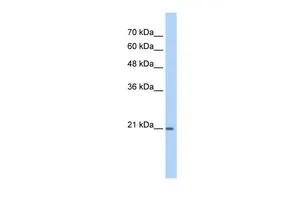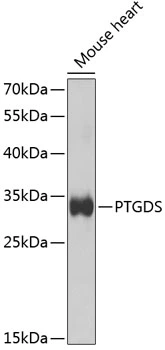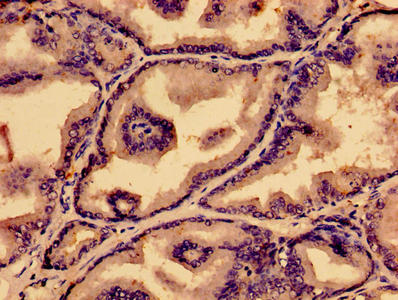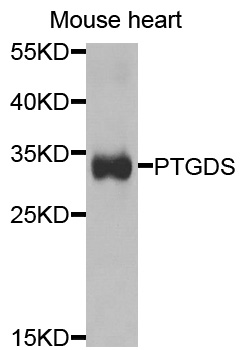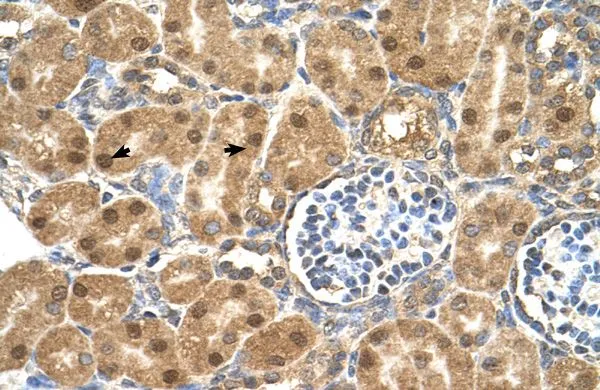
IHC-P analysis of human kidney tissue using GTX46255 PTGDS antibody at 4.0-8.0microg/ml.
PTGDS antibody, N-term
GTX46255
ApplicationsWestern Blot, ImmunoHistoChemistry, ImmunoHistoChemistry Paraffin
Product group Antibodies
TargetPTGDS
Overview
- SupplierGeneTex
- Product NamePTGDS antibody, N-term
- Delivery Days Customer9
- Application Supplier NoteWB: 0.2-2.5 ug/ml. IHC-P: 2-10 ug/ml. *Optimal dilutions/concentrations should be determined by the researcher.Not tested in other applications.
- ApplicationsWestern Blot, ImmunoHistoChemistry, ImmunoHistoChemistry Paraffin
- CertificationResearch Use Only
- ClonalityPolyclonal
- Concentration0.5-1 mg/ml
- ConjugateUnconjugated
- Gene ID5730
- Target namePTGDS
- Target descriptionprostaglandin D2 synthase
- Target synonymsbeta-trace protein; cerebrin-28; glutathione-independent PGD synthase; glutathione-independent PGD synthetase; lipocalin-type prostaglandin D synthase; LPGDS; L-PGDS; PDS; PGD2; PGD2 synthase; PGDS; PGDS2; prostaglandin D synthase; prostaglandin D2 synthase 21kDa (brain); prostaglandin-H2 D-isomerase; testis tissue sperm-binding protein Li 63n
- HostRabbit
- IsotypeIgG
- Protein IDP41222
- Protein NameProstaglandin-H2 D-isomerase
- Scientific DescriptionThe protein encoded by this gene is a glutathione-independent prostaglandin D synthase that catalyzes the conversion of prostaglandin H2 (PGH2) to postaglandin D2 (PGD2). PGD2 functions as a neuromodulator as well as a trophic factor in the central nervous system. PGD2 is also involved in smooth muscle contraction/relaxation and is a potent inhibitor of platelet aggregation. This gene is preferentially expressed in brain. Studies with transgenic mice overexpressing this gene suggest that this gene may be also involved in the regulation of non-rapid eye movement sleep. [provided by RefSeq, Jul 2008]
- Storage Instruction-20°C or -80°C,2°C to 8°C
- UNSPSC12352203

